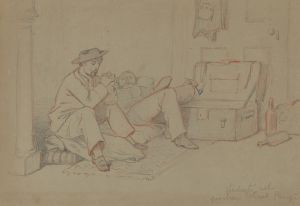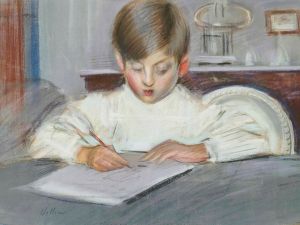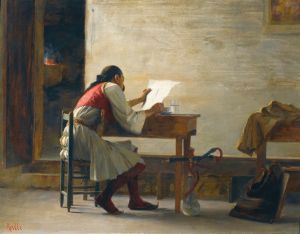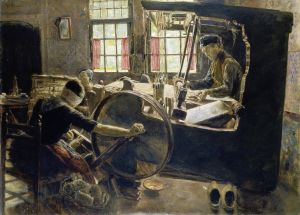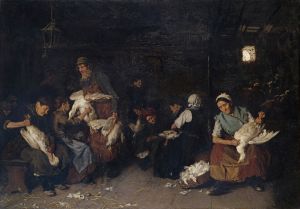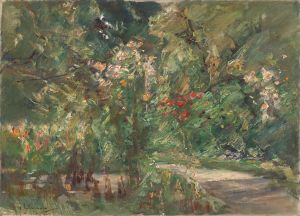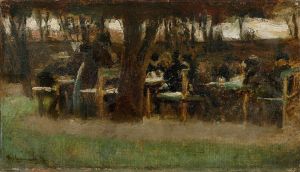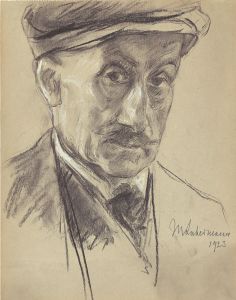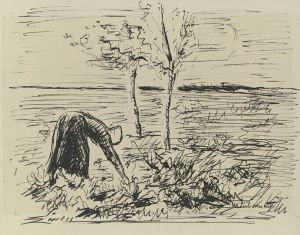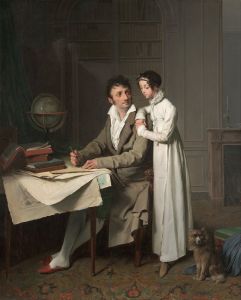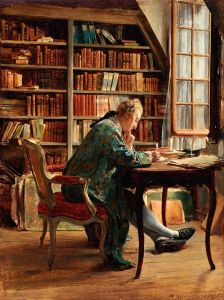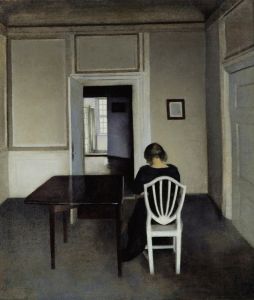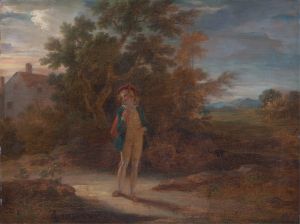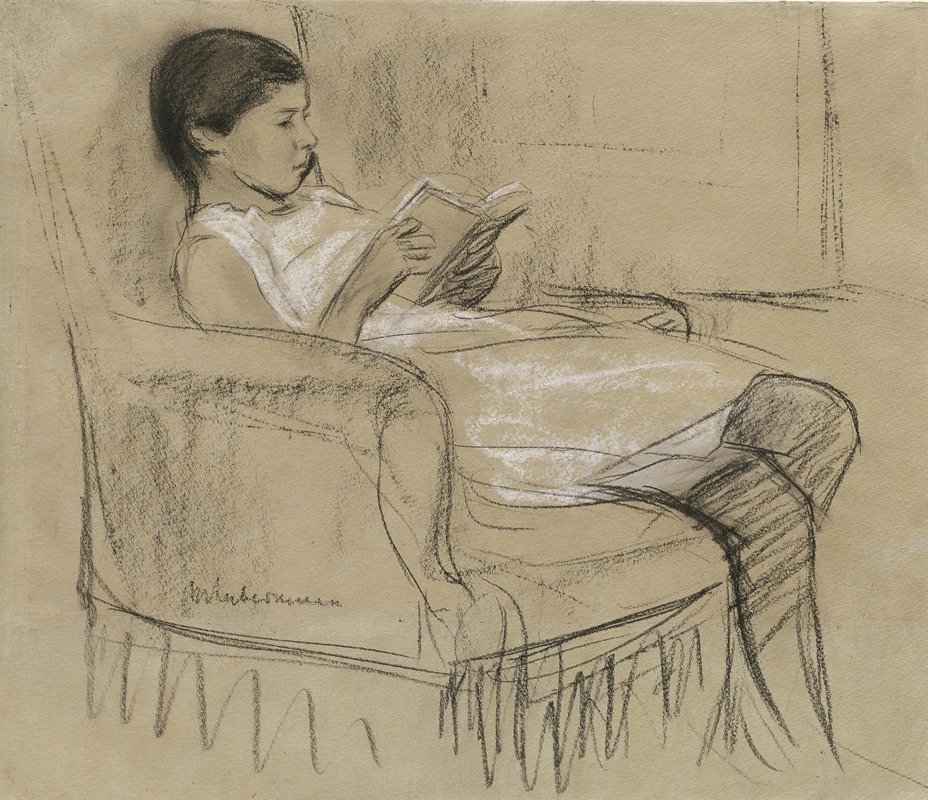
The Artist’s Daughter Käthe Reading in a Chair
A hand-painted replica of Max Liebermann’s masterpiece The Artist’s Daughter Käthe Reading in a Chair, meticulously crafted by professional artists to capture the true essence of the original. Each piece is created with museum-quality canvas and rare mineral pigments, carefully painted by experienced artists with delicate brushstrokes and rich, layered colors to perfectly recreate the texture of the original artwork. Unlike machine-printed reproductions, this hand-painted version brings the painting to life, infused with the artist’s emotions and skill in every stroke. Whether for personal collection or home decoration, it instantly elevates the artistic atmosphere of any space.
Max Liebermann was a prominent German painter and printmaker, associated with the Impressionist movement. One of his notable works is "The Artist’s Daughter Käthe Reading in a Chair," which captures a personal and intimate moment in the artist's life. This painting is a testament to Liebermann's skill in portraying everyday scenes with a sense of realism and emotional depth.
"The Artist’s Daughter Käthe Reading in a Chair" depicts Liebermann's daughter, Käthe, engaged in the quiet activity of reading. The painting is characterized by its use of light and shadow, a hallmark of Impressionist art, which Liebermann adeptly employs to create a serene and contemplative atmosphere. The composition is simple yet effective, focusing on Käthe seated comfortably in a chair, absorbed in her book. This choice of subject matter reflects Liebermann's interest in capturing the essence of modern life and the intimate moments that define it.
Liebermann's technique in this painting demonstrates his mastery of color and form. He uses a soft palette to convey the tranquility of the scene, with gentle brushstrokes that suggest the texture of the fabric and the play of light on Käthe's face and surroundings. The background is kept deliberately understated, ensuring that the viewer's attention remains on the central figure of Käthe. This approach not only highlights the subject but also emphasizes the peacefulness of the moment.
Max Liebermann was a key figure in the Berlin Secession, an art movement that sought to break away from the traditional academic standards of the time. His work, including "The Artist’s Daughter Käthe Reading in a Chair," reflects the Secession's ideals of innovation and a focus on contemporary themes. Liebermann's paintings often depicted scenes of leisure and domestic life, aligning with the Impressionist interest in capturing fleeting moments and the effects of light.
Throughout his career, Liebermann faced both acclaim and criticism. As a Jewish artist in Germany, his work was later condemned by the Nazi regime, which labeled it as "degenerate art." Despite this, Liebermann's contributions to the art world have been recognized for their influence on modern art and their role in shaping the direction of German Impressionism.
"The Artist’s Daughter Käthe Reading in a Chair" remains an important work within Liebermann's oeuvre, not only for its artistic merit but also for its personal significance. It offers insight into the artist's life and his relationship with his family, providing a glimpse into the private world of one of Germany's most celebrated painters. The painting continues to be appreciated for its beauty and its ability to convey the quiet joys of everyday life, a theme that resonates with viewers even today.





